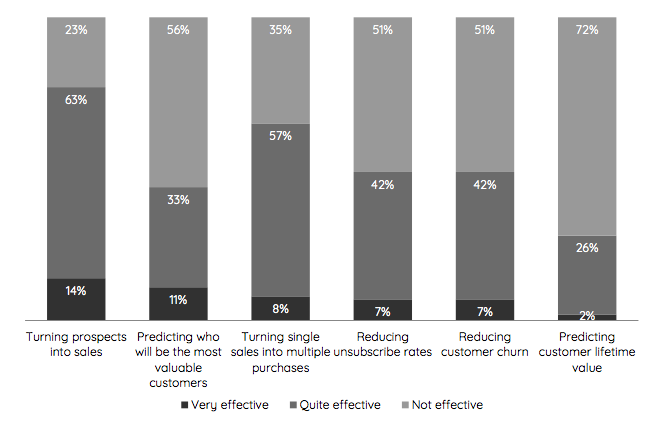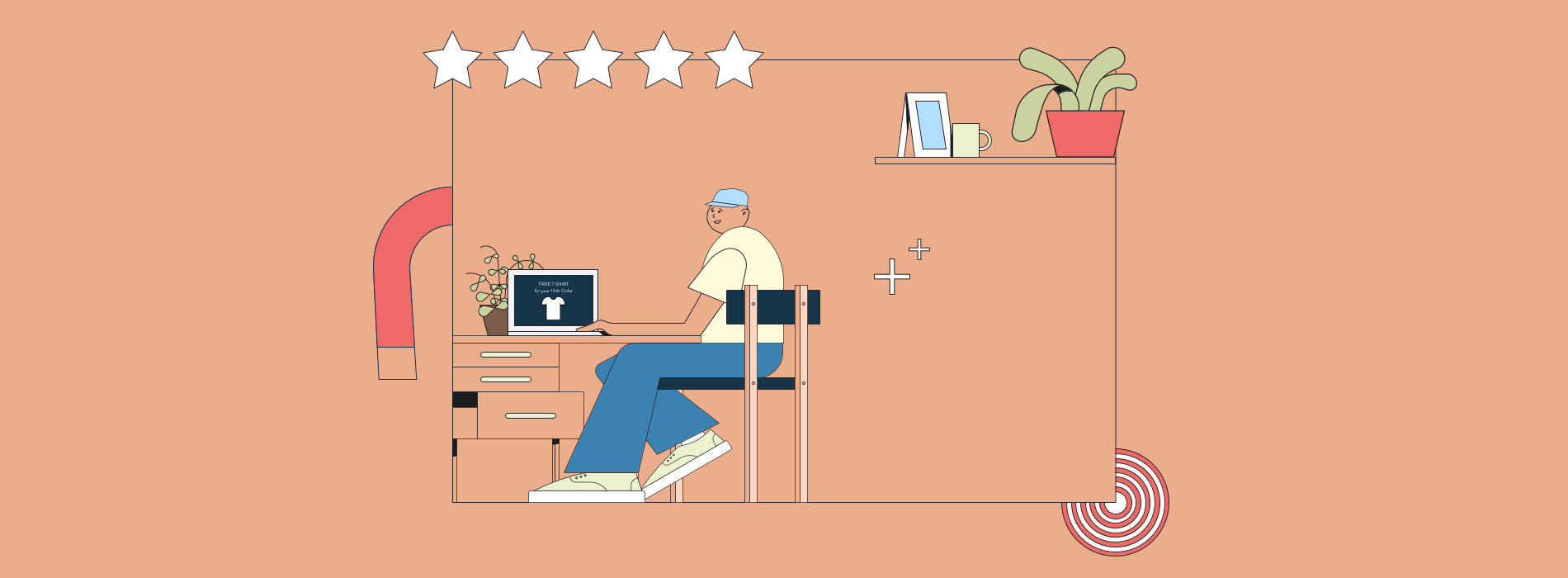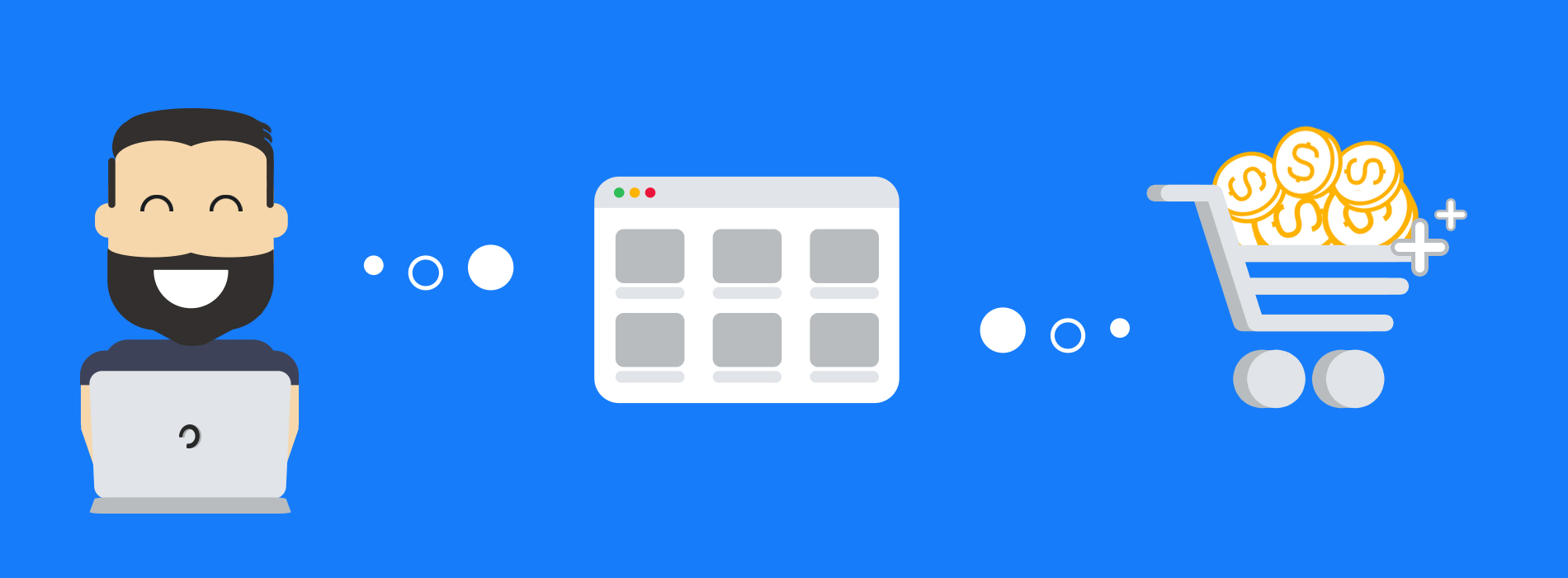Increasing customer lifetime value is a key goal for most companies, but what tactics do they use to drive CLTV, and how effective are they?
In this post, we’ll look at the ways retailers try to increase customer spend and improve retention rates.
Customer lifetime value (CLTV) is a measure of the worth of an individual customer over the course of their relationship with a company.
Broadly speaking, it’s the revenue you make from customers once acquisition and any other costs have been deducted.
According to the Econsultancy / RedEye CLTV Report, lifetime value is considered important to companies and agencies, but many still have much to do to improve their approach.
For example, while 76% of respondents say that driving customer loyalty is a priority for their companies, just 33% say that CLTV is a reported and valued KPI.
The Econsultancy report finds that companies see the benefits of CLTV, with the majority of respondents seeing an investment in lifetime value as a more profitable investment than acquisition.


The challenge is how they achieve this. Companies are generally geared up for customer acquisition, and this is where marketing budgets tend to be focused.
So, while 77% of respondents say their companies are very or quite effective at turning prospects into sales, they’re less confident about areas like reducing churn and predicting lifetime value.


Companies are using a variety of methods to increase CLTV, with more effective use of data at the forefront.


What tactics or strategies has your organisation (or have your clients) found to be most effective for increasing customer lifetime value?
This focus on data is a recognition that improving lifetime value, and boosting customer loyalty requires the ability to find out more about customers and target them more effectively.
Practical Ways to Increase Customer Lifetime Value
These are some of the practical steps retailers are taking to improve customer retention, and therefore increase lifetime value.
User Experience
If your product and prices suit the customer, it’s then about making it as easy as possible for customers to find and buy items online, again and again.
A site that’s easy to buy from without any major problems is one that customers are more likely to return to. It will help you to retain customers and stand out from your competitors.
Make Repeat Purchases Easy
By encouraging customers to save address and payment details, or by using easy payment methods, you can make transactions much easier so people can buy again without any hassle.
Amazon’s success is partly based on this– with saved details it can make purchasing as easy as clicking one button.
Reward Loyalty
Rewarding loyalty is one way to make customers feel special or appreciated, and also gives them tangible incentives which encourage them to make repeat purchases.
Loyalty schemes are an obvious way to do this, and there are some excellent examples from bigger retailers that have really worked well.
According to Zoe Ward, Optimisation Strategist at PRWD:
“Turning existing customers into repeat customers doesn’t happen automatically. This is where a customer loyalty program can help.
Rewarding loyalty works well because providing a reward each time helps to positively reinforce a behaviour and this can encourage habit forming behaviours.
The end goal here is that choosing a brand becomes an automatic choice, and customers will repeat purchase rather than abscond elsewhere.”


Delivery and Returns Policies
Delivery matters, and if you can deliver on time and promised, customers are more likely to return and buy more.
In addition, an easy to use returns service means that, even if customers don’t find the product they want first time around, they’ll be happy to buy from that retailer again.


Good customer service around these areas and beyond helps to build trust and respect with customers, and can make them more loyal.
Personalization
The data retailers collect about customer behaviour can be used to create a better experience for customers, and learn more about how and why they buy.
The use of personalization in this context is about making things more relevant for customers. A good example of personalization is relevant product recommendations.
Email Marketing
Once someone has made their first purchase, email can be a useful line of communication to keep your business in customers’ minds.
With a strong email strategy post-purchase, retailers can reinforce the good feeling after that first purchase, provide relevant product recommendations, promotions and prompts to keep them coming back to you.


Customer Service
Good customer service is one of the most effective customer retention strategies.
According to James Gurd, Owner and Lead Consultant at Digital Juggler:
“Providing the most amazing customer service proposition you can makes it hard for people to want to shop elsewhere.
That means great product, competitive pricing, efficient delivery, great after care, responsive customer service etc.”
Download The Experts Guide to Customer Loyalty and Retention and learn from the world’s biggest brands with the happiest (and highest-spending) customers.
Speak to an expert
Learn how to convert your online audience into revenue with our experts.
Graham Charlton
Graham Charlton is Editor in Chief at SaleCycle. He's been covering ecommerce and digital marketing for more than a decade, having previously written reports and articles for Econsultancy. ClickZ, Search Engine Watch and more.







![Valentine’s Day Ecommerce Tips and Trends [2024 Strategy]](https://www.salecycle.com/wp-content/uploads/2019/01/valentines-ecommerce-1.png)




![How SaleCycle helped Vodafone increase their online sales by an additional 2,000 additional sales per month [Extended Version]](https://www.salecycle.com/wp-content/uploads/2023/08/vodafone-banner.webp)





